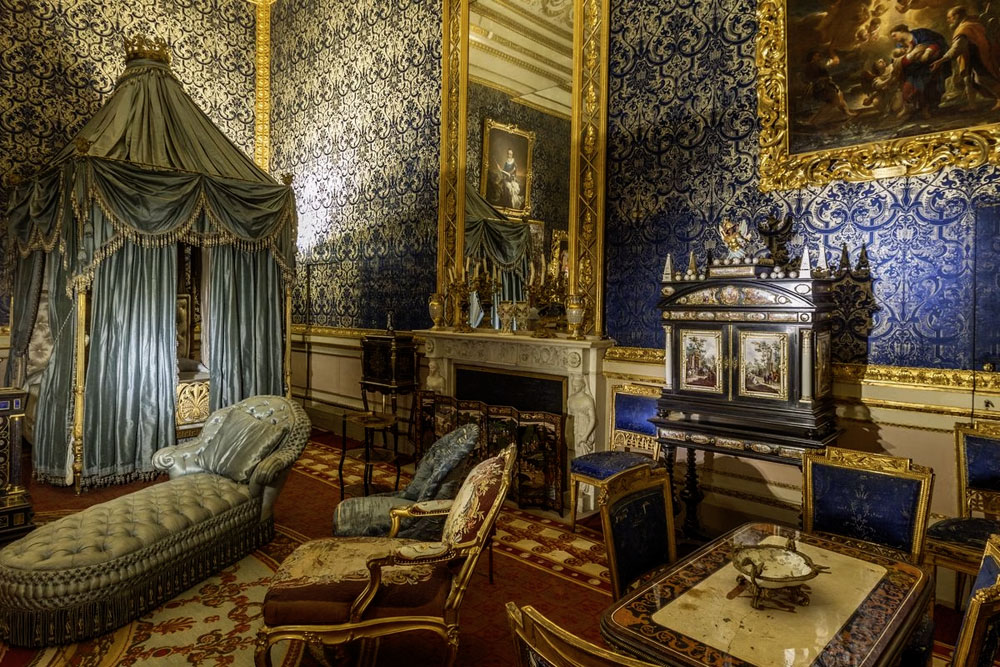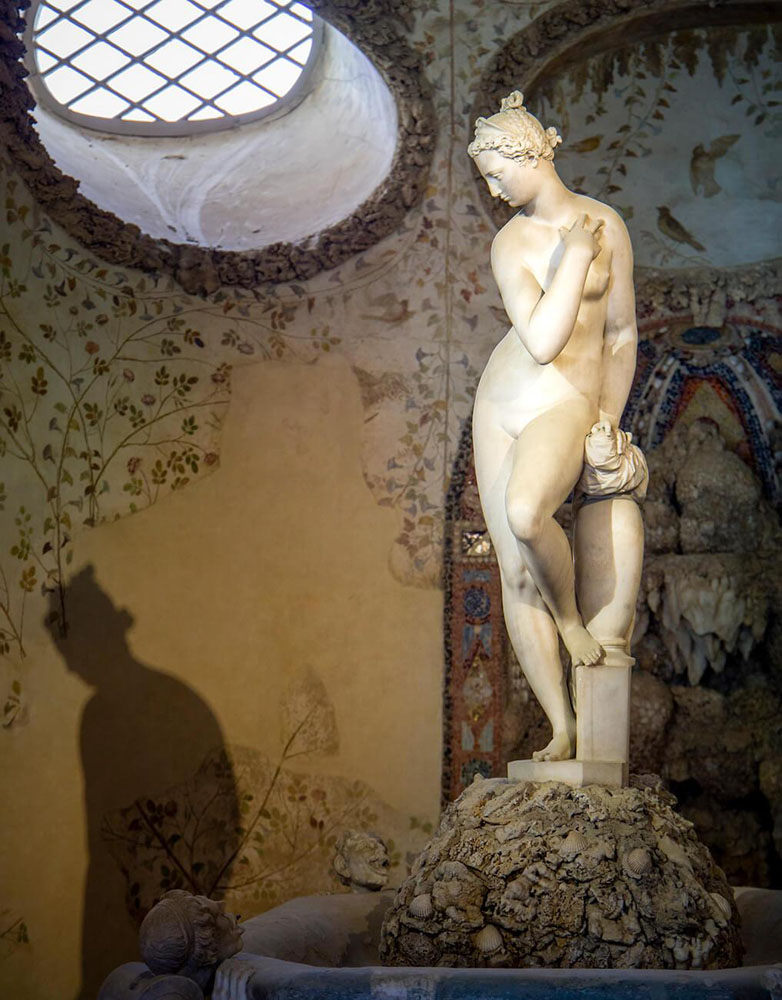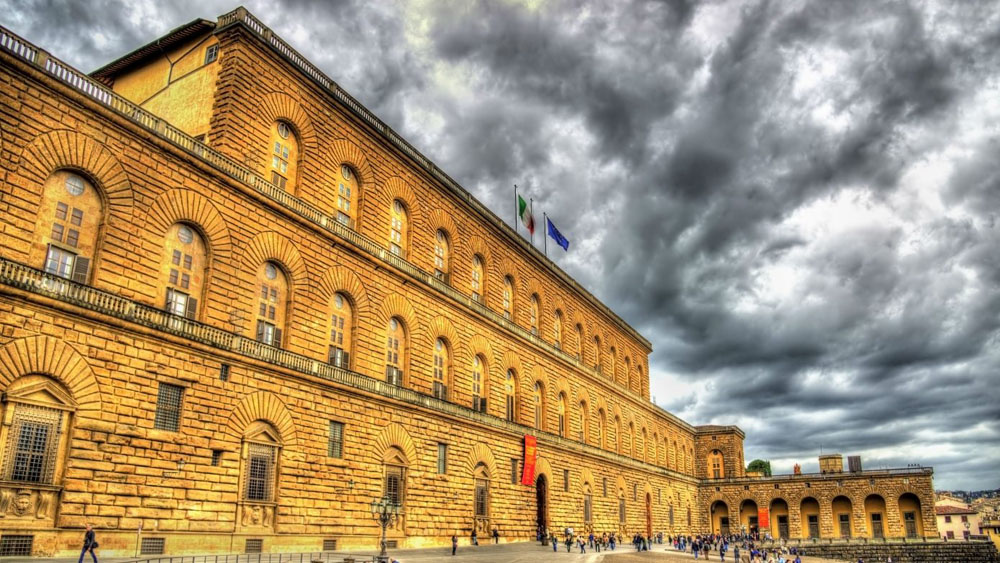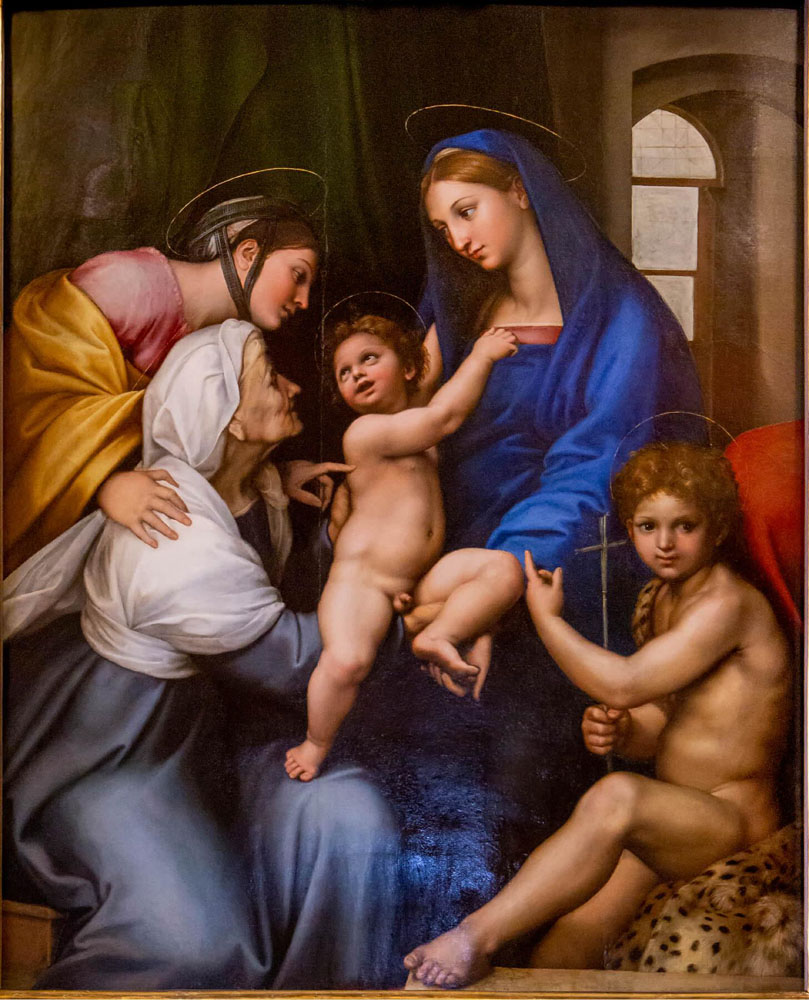Pitti Palace guided tour with Palatine Gallery and Boboli Garden in Florence





Palazzo Pitti, the largest and most sumptuous of the palaces in Florence
Palazzo Pitti is a wonderful palace with an imposing rustic ashlar structure overlooking Piazza Pitti which was purchased by the Medici at the height of their power to transform it into a dynastic palace. For this reason it was enlarged and equipped at the back with a splendid Italian garden called the Boboli Gardens, becoming the model of the royal palace later adopted by other dynasties in Europe. For almost five centuries it was the prestigious residence of the rulers on the throne of Tuscany: the Medici, the Habsburgs of Lorraine and finally of the Kings of Italy with the Savoys in the short period in which Florence was the capital of the Kingdom of Italy from 1865 to 1872. Even today the tour of Palazzo Pitti with the extraordinary Palatine Gallery and the Boboli Gardens is a fascinating journey into the eras and styles that have characterized the history of Florence and Tuscany in which you can enjoy the beauty and splendor with which this residence, the larger and more sumptuous than Florence, it was decorated with magnificent furniture, furnishings, frescoes, stuccos and collections of paintings from the various dynasties that succeeded one another on the throne.
The splendor of the Medici in Palazzo Pitti and in the Boboli Gardens
When the building passed to the Medici in 1549 thanks to the purchase of Eleonora di Toledo, wife of Cosimo I, to make it a place of representation worthy of the grandeur of the nascent Grand Duchy, it was very different. It had only three large doors on the façade and a double row of seven windows. It was significantly enlarged by Bartolomeo Ammannati, an architect favored by the dukes, who extended the façade and created a majestic courtyard on the ground floor, the largest in Florence, stretching out towards the magnificent Italian garden of Boboli. Garden and Palace were therefore conceived together and developed together over the following three centuries, in a close dialogue between art and nature which led Pitti and Boboli to become the model for palaces throughout Europe. Inside you can admire the Ammannati Courtyard, the splendid entrance area to the palace, with only three porticoed sides because the fourth opens into the garden behind with the Moses Fountain surmounted by the Artichoke Fountain. On the ground floor is the seat of the Grand Dukes’ Treasury, on the first floor there is the Palatine Gallery and the Royal and Imperial Apartments, on the second floor the Gallery of Modern Art and the Costume Gallery and the Porcelain Museum are also located in the palace.
The wonders of the Palatine Gallery
The heart of our tour of Palazzo Pitti and Boboli will be the visit to the Palatine Gallery. It is an extraordinary collection, including the largest concentration of works by Raphael in the world, as well as paintings by Titian, Tintoretto, Caravaggio and Rubens. The paintings, in their sumptuous frames, completely cover the walls of the rooms, enriched by the presence of sculptures, vases and tables in semi-precious stones according to the model typical of seventeenth-century picture galleries. The astonishing series of frescoes created by Pietro da Cortona for Ferdinando II de’ Medici between 1640 and 1647 in the so-called “Sale dei Pianeti”, increases the exclusive charm of the visit to the Gallery, where every single work of art is enhanced by its agreement with the rest of the furnishings. The sumptuous Picture Gallery was established between the end of the eighteenth century and the first decades of the nineteenth century by the Lorraines, who placed around 500 works chosen from the masterpieces of the main Medici collections in the reception rooms.
The Boboli Gardens, a model of an Italian garden
Behind Palazzo Pitti lies the marvelous Boboli Gardens. The Medici were the first to take care of its arrangement, creating the model of Italian garden which became exemplary for many European courts. The vast green surface, divided in a regular way, constitutes a real open-air museum, populated with ancient and Renaissance statues, adorned with caves, first of all the famous one created by Bernardo Buontalenti called the Grotta Grande, and large fountains, like that of Neptune and the Ocean. The subsequent Lorraine and Savoy dynasties further enriched its structure, expanding the borders that run along the ancient city walls up to Porta Romana. Of notable visual appeal is the terraced area where the eighteenth-century Kaffeehaus pavilion is located, a rare example of Rococo architecture in Tuscany, or the Limonaia. The visit to Boboli completes that of the Pitti Palace, of which it is an integral part, and allows you to fully grasp the spirit of court life and at the same time enjoy the experience of a garden that is always renewed while respecting its tradition.
Tour Details
- TYPE OF TOUR: PRIVATE FOR INDIVIDUALS OR GROUPS – BY RESERVATION
- AVAILABLE ON DAYS: Tuesday, Wednesday, Thursday, Friday, Saturday, Sunday 9 AM - 4 PM
- DURATION: 4 HOURS
- TYPE OF SERVICE: GUIDED TOUR
- DIFFICULTY: Easy, suitable for children aged 6 and over and teenagers
- MEETING POINT: in front of the main entrance of Palazzo Pitti
- NOTE: OPTIONAL RESERVATION AND PRE-SALE PURCHASE OF TICKETS FOR THE PALATINE GALLERY AND BOBOLI GARDEN €23 per person
What you will see on the Tour of Pitti Palace and Boboli Gardens in Florence
- Piazza Pitti with the mass of the Palace
- The Ammannati Courtyard
- The Fountain of Moses
- The Palatine Gallery with its extraordinary collection of paintings by Raphael, Titian, Rubens, Caravaggio, Artemisia Gentileschi and many other important masters
- The Table of the Muses
- Napoleon’s Bath
- The White Room
- The Artichoke Fountain
- The Boboli Amphitheater
- The Great Cave of Buontalenti



